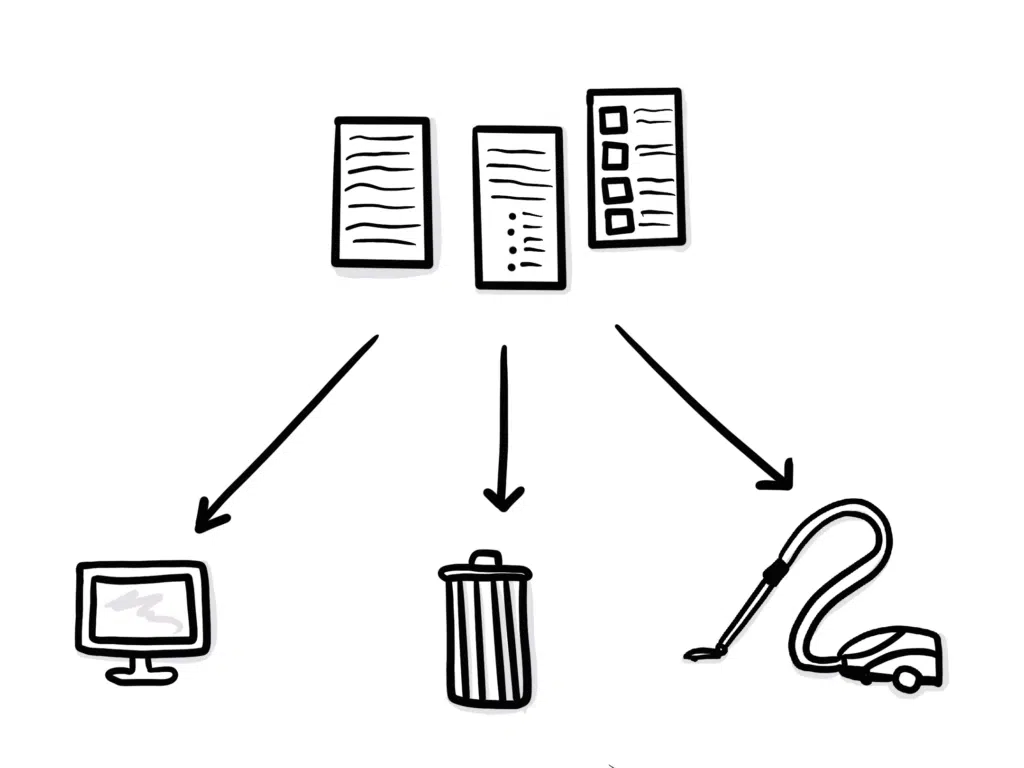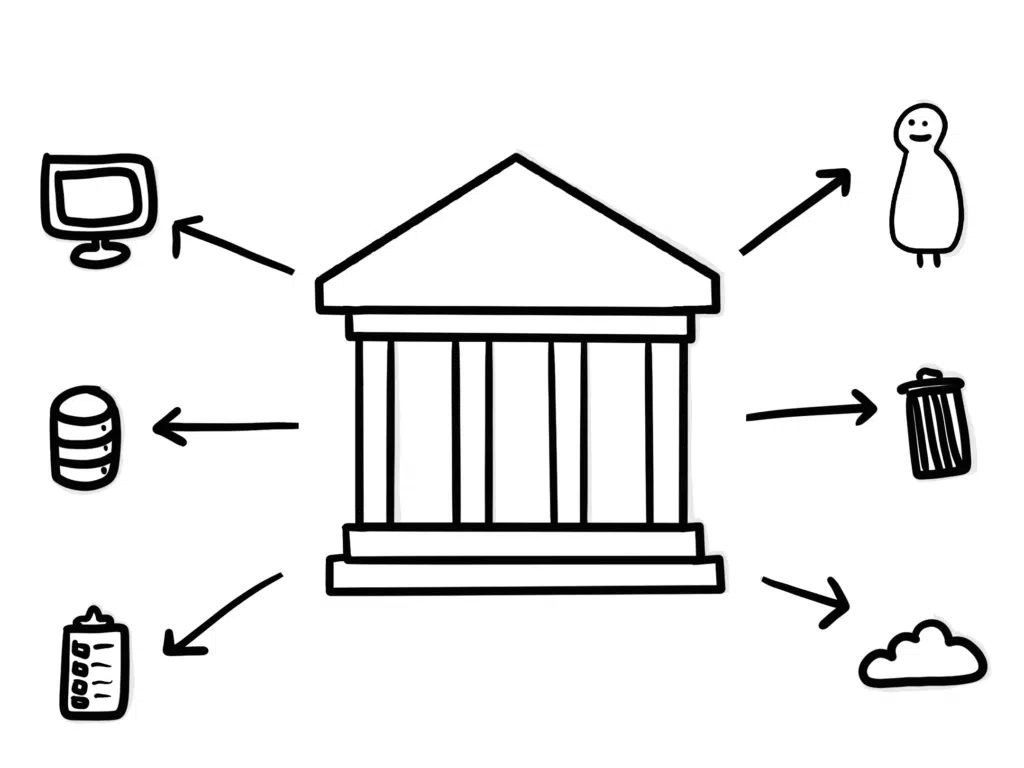Technology is always changing—both its capabilities and the regulations around it. And just as it’s vital to futureproof your ministry’s digital strategy, it’s also important to futureproof the technology itself.
Futureproofing determines how well you can pivot in the face of change. This is a key, but often undervalued, part of your role as a steward of your organization’s digital ministry.
Why futureproofing matters
Because technology is constantly changing, chances are high you’ll encounter one or both of these two pinch points throughout your career:
- The need to change from one platform to another to upgrade your technology, integrate with another tool, or meet a new ministry objective.
- Bringing a new technology on board to augment or expand your existing technology as more tools become available.
Futureproofing prepares for those inevitable changes so your organization can efficiently transition as needed. Ministries who fail to do this will find themselves wasting time and money as they scramble to keep up.
Who should be futureproofing?
Boards and leadership play a vital role in futureproofing a ministry’s strategy. But futureproofing the technology usually depends on those with their boots on the ground: product owners and developers.
As you’re making decisions about data models, writing tests, and documenting processes, you should always have the future use case in mind as well. How easily can someone step into your role in the future? How easily can you transition to a new program or technology?
How to futureproof
Knowing why futureproofing is important and who is responsible for it is a good start, but what does futureproofing look like in the real world? We’ve identified seven areas of focus to help you prepare your digital ministry for the future:

1. Data structure
You can lay a strong foundation by structuring your data logically from the very beginning. This means considering the diversity of models represented in your data—both the data coming in (the input) and how it’s used (the output).
For example, let’s consider a volunteer management system. In this case, the granular data you need to collect might include first name, last name, multiple email addresses, multiple shipping addresses, etc. Building a detailed structure for this data—and then sticking to it—will make future migrations easier. You’ll be able to see where you need to connect the dots, which will increase your confidence in the actual migration.
It’s important to note that while planning upfront is important, the data model will inevitably change as your organization needs data in a new or different way. The ideas you have about your data today represent a very specific viewpoint. Those ideas will change with your organization, technology, and third-party tools, and your model will need to change as well.

2. Data quality
In addition to modeling data well, the data you collect needs to be “clean.” Data can get dirty if there are no guards or tests in place, i.e., ensuring email addresses are in a valid format.
When you make updates to the model, you should clean the data to ensure there aren’t unused fields or fields you intended for one thing but used for another. As the data matures, the model also needs to mature with it. For example, consider a broadcast media ministry with hundreds of audio files in the archives. If you want to begin organizing those with tags (Scripture references, spiritual formation terms, topics, etc.), it’s easy to begin tagging files moving forward. But in order to ensure data quality, you will also need to develop a plan for tagging the archives.

3. Interoperability
The next step is to be sure your data is malleable to meet the demands of your ministry goals, both now and in the future. Starting with a solid model and clean data is the first step, but you also need to collect data in a way that is useable in a variety of ways and systems.
To oversimplify this idea for a minute, think of a single First Name, Last Name field. Let’s say your main purpose for collecting names is for your volunteer database. The single field might work within the volunteer database system just fine. But when you’re ready to begin using that information to send automated emails, you realize the marketing automation system can’t parse it into two separate fields to address your email recipients by first name.
While that may mean collecting data differently—i.e., separate First Name and Last Name fields—interoperability can also express itself in an API. APIs essentially serve as dispatches that know where to get the data and how to manipulate it for other systems to consume it. So if one system collects First Name, Last Name in a single field, interoperability could mean having an API in place to parse the first and last name for the marketing automation system.

4. Compartmentalize
Another step you can take to futureproof your technology is to compartmentalize each part of the process. Rather than creating one monolithic application for the entire process, it can be broken down into smaller modules. This allows each piece to stand on its own without being affected by other parts of the process. However, when you compartmentalize something, you have to then be explicit about each of its connections and which parts of the application should be shared.
Ultimately, this is an IT architecture decision your team should make together. Splitting the workflow into reasonable bits will give you more flexibility downstream but also requires managing each of those connections. Each approach has tradeoffs, and the right answer will vary based on your organizational structure, business logic, and goals.

5. Documentation
Documentation is a critical part of futureproofing. Good documentation includes the model itself, any manual workflows, and the business logic.
Documenting the process tells future readers, “When some provocation happens, it goes through this sequence of events to create this result.” For example:
- Someone signs up to volunteer at an event.
- The system connects that event to their volunteer record.
- It fires off an email to the volunteer coordinator.
- The coordinator initiates a background check.
- Once that’s done, they manually trigger a response with detailed next steps.
Documenting the details of what the system does automatically and what humans need to do manually doesn’t happen naturally. Most people on the team will know how the thing works with the way they work. But if it only lives in each individual’s head, it impacts the future of the organization. Instead, you need to be sure there is a clear understanding of the impact of each data point and procedure. The moment the code changes, your documentation will be out of date, so part of documenting well is also keeping it updated.

6. Tests
Writing automated tests is another important part of futureproofing. Done well, testing serves as an additional form of documentation. The tests should be human-readable, and the results should map to the business logic your organization cares about.
Having good tests in place also creates a safeguard. With automated testing, the system will let you know when a future change breaks something. Tests are the safety net for the inevitable changes the code will go through as your organization’s needs change and grow over time.
Like documentation, tests are an abstraction from the code. This means any time the code changes, both the documentation and tests need to be updated. This adds a layer of complexity, but automated testing provides safeguards that tend to outweigh that complexity.

7. Governance
Finally, as data and privacy laws continue to evolve, you should have a clear understanding of the governance of your user data. This includes who has access to the data and when. As the type of data you’re collecting changes and increases, the need for proper governance grows as well. In the case of an audit, you need to show clear accountability for how you manage the data.
This idea of data governance can span a spectrum from “complicated” to “a legal nightmare.” It includes the data in your customer relationship management (CRM) system, your privacy policy, and how you handle payment information. It can also include data from a wide range of unexpected sources, like web server logs with logged IP addresses. For organizations without the internal expertise to navigate this complicated arena, it may be wise to contract with a specialist who can help you establish governance procedures and avoid legal pitfalls.
Futureproofing your digital properties requires intention and hard work. But keeping your eye on the future helps ensure your technology can grow with these inevitable changes. This is important for any organization that hopes to continue existing in the future. For ministries, it’s also part of stewarding your donor’s gifts well!